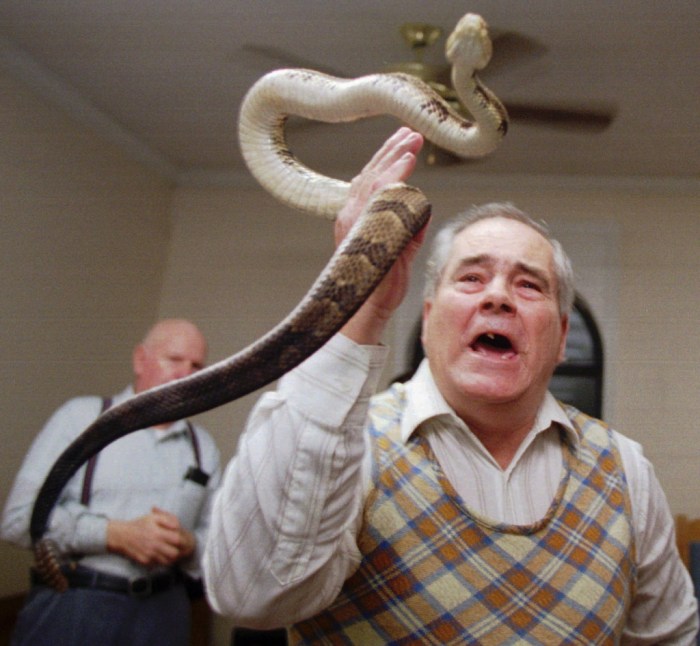
How to handle his snake yumi sin and fit kitty – Delving into the intriguing topic of how to handle his snake, Yumi Sin, and fit kitty, this comprehensive guide will unravel the intricacies of creating a harmonious coexistence between these fascinating creatures. We’ll explore essential steps for safe handling, training techniques for peaceful interactions, and crucial signs of stress to watch out for.
As we delve deeper, we’ll uncover the significance of crafting a safe and stimulating environment, ensuring both pets’ well-being. We’ll also discuss emergency preparedness and the importance of veterinary care for these unique companions.
How to handle your snake Yumi and fit kitty

Handling your snake and cat together requires careful planning and supervision to ensure the safety of both pets. Here’s a step-by-step guide to help you handle them safely:
Creating a positive and safe environment
Before handling your snake and cat together, create a positive and safe environment by:
- Choosing a neutral location where neither pet feels threatened.
- Keeping the session short and supervised.
- Introducing them gradually, starting with brief supervised interactions.
Handling your snake and cat together
Once you’ve created a safe environment, follow these steps:
- Gently pick up your snake and support its body securely.
- Hold your cat firmly, making sure it’s comfortable and secure.
- Bring your snake and cat close together, but keep them separated by a safe distance.
- Observe their reactions and adjust the distance accordingly.
- If either pet shows signs of discomfort or aggression, separate them immediately.
Importance of supervision and precautions
It’s crucial to supervise your snake and cat during the entire interaction. Be prepared to intervene if necessary. Additionally, take these precautions:
- Never leave your snake and cat unattended together.
- Avoid handling your snake if it has recently eaten or is shedding.
- Trim your cat’s nails to minimize the risk of scratches.
- Wash your hands thoroughly before and after handling your pets.
By following these guidelines, you can safely handle your snake and cat together while fostering a positive and enriching experience for both pets.
Training your snake and cat to interact peacefully

Training your snake and cat to interact peacefully can be a rewarding experience. It can help to reduce stress for both animals and create a more harmonious household. With patience and positive reinforcement, you can teach your snake and cat to coexist peacefully.
Okay, so I’ve got this snake named Yumi Sin and this cat named Fit Kitty, and they’re both pretty chill, but I’m always looking for ways to make things better. That’s why I was stoked to find this article on how to increase insurance agent productivity . I mean, who doesn’t want to be more productive, right? Anyway, I’m hoping that by applying some of these tips, I can not only boost my productivity but also find more time to hang out with my furry friends.
Positive Reinforcement, How to handle his snake yumi sin and fit kitty
Positive reinforcement is a key component of training your snake and cat to interact peacefully. When your snake or cat exhibits the desired behavior, reward them with a treat or praise. This will help them to associate the desired behavior with something positive, making them more likely to repeat it in the future.
If you’re looking for a fun way to handle your snake Yumi Sin and your fit kitty, you might want to consider reading how to increase insurance agent productivity . It’s a great way to learn how to increase your productivity and make more money.
But don’t forget to keep an eye on your snake and kitty while you’re reading!
Gradual Exposure
Gradual exposure is another important part of training your snake and cat to interact peacefully. Start by introducing them to each other in a controlled environment, such as a separate room with a closed door. Keep the interactions short and supervised, and gradually increase the length of time they spend together as they become more comfortable with each other.
Supervised Interactions
It is important to supervise all interactions between your snake and cat, especially in the beginning. This will help to prevent any accidents or injuries. As your snake and cat become more comfortable with each other, you can gradually reduce the amount of supervision you provide.
Treats and Rewards
Treats and rewards can be a powerful tool in training your snake and cat to interact peacefully. When your snake or cat exhibits the desired behavior, reward them with a treat or praise. This will help them to associate the desired behavior with something positive, making them more likely to repeat it in the future.
Identifying signs of stress and aggression
Identifying signs of stress and aggression in snakes and cats is crucial for ensuring their well-being and maintaining a harmonious household. Recognizing these signs early on allows for prompt intervention and management to prevent potential harm.
I know how to handle my snake Yumi Sin and fit kitty, but when it comes to increasing insurance agent productivity, I’m clueless. I need to find a way to increase insurance agent productivity so that I can make more money.
I’ll have to figure out how to handle my snake Yumi Sin and fit kitty while I’m working on increasing insurance agent productivity.
Snakes
- Defensive posturing:Coiling up tightly, raising the head and neck, and flattening the body are all signs of defensiveness.
- Hissing or striking:These are clear indications of aggression and should be taken seriously.
- Escape attempts:Snakes may try to escape their enclosure or hide when feeling stressed or threatened.
- Refusal to eat:Loss of appetite can be a sign of stress or illness.
- Regurgitation:Snakes may regurgitate their food if they are stressed or handled inappropriately.
Cats
- Dilated pupils:Wide-eyed and dilated pupils indicate fear or aggression.
- Arched back:An arched back with raised fur is a defensive posture.
- Tail twitching:Rapid tail twitching can be a sign of agitation or aggression.
- Hissing or growling:These vocalizations are clear warnings to stay away.
- Biting or scratching:Cats may resort to biting or scratching if they feel threatened.
If you observe any of these signs, it’s important to seek professional help from a veterinarian or animal behaviorist. They can assess the situation and provide guidance on how to manage stress and aggression effectively.
Creating a safe and enriched environment

Providing a suitable and enriched environment is crucial for the well-being of both your snake and cat. It involves creating separate, secure spaces for each pet, as well as providing activities that stimulate their physical and mental needs.
Enclosure Design
Your snake’s enclosure should mimic its natural habitat and cater to its specific needs. For example, arboreal snakes require vertical space for climbing, while terrestrial snakes prefer horizontal space for burrowing. The enclosure should provide adequate hiding spots, temperature gradients, and humidity levels to ensure your snake’s comfort and health.
Safe Space for the Cat
Cats are territorial animals and need their own safe haven where they can retreat from potential threats. This space should be separate from the snake’s enclosure and provide a comfortable place for the cat to rest and feel secure.
Enrichment Activities
Enrichment activities help prevent boredom and promote well-being in both pets. For snakes, these activities can include providing climbing branches, hiding boxes, and interactive toys. Cats, on the other hand, enjoy interactive toys, scratching posts, and designated play areas.
Emergency preparedness and veterinary care: How To Handle His Snake Yumi Sin And Fit Kitty
Unforeseen circumstances can arise at any moment, and being prepared is crucial for the well-being of your snake and cat. Establishing a comprehensive emergency plan will ensure their safety and provide peace of mind during unexpected situations.
Furthermore, routine veterinary check-ups are essential for monitoring their health, detecting potential issues early on, and providing preventive care to maintain their well-being.
Nearby veterinary clinics
Identify and establish a relationship with a reputable veterinary clinic specializing in exotic pets, particularly reptiles and cats. Their expertise and experience in handling these unique species will ensure your pets receive the best possible care.
Emergency plan
Create a detailed emergency plan that Artikels specific actions to be taken in case of emergencies, such as power outages, natural disasters, or medical emergencies. This plan should include:
- Contact information for your veterinarian and emergency animal hospitals
- A designated safe place for your pets
- An emergency kit containing food, water, medications, and first-aid supplies
- Instructions for transporting your pets safely in case of evacuation
Regular check-ups
Schedule regular veterinary check-ups for both your snake and cat. These check-ups allow your veterinarian to assess their overall health, identify any potential issues, and provide preventive care, such as vaccinations, deworming, and parasite control.
By following these guidelines, you can ensure that your snake and cat are well-prepared for emergencies and receive the necessary veterinary care to maintain their health and well-being.
Outcome Summary

In conclusion, handling your snake, Yumi Sin, and fit kitty requires a thoughtful and responsible approach. By implementing the strategies Artikeld in this guide, you can foster a safe and enriching environment where both pets can thrive. Remember, patience, supervision, and a keen eye for their well-being are key to a successful and harmonious relationship between these unlikely companions.
FAQ
Is it safe to let my snake and cat interact?
With proper supervision and training, it’s possible for snakes and cats to interact peacefully. However, it’s crucial to observe their body language and intervene if any signs of stress or aggression arise.
How can I train my cat to be comfortable around my snake?
Start by introducing them gradually in a controlled environment. Use positive reinforcement and treats to reward your cat for calm behavior around the snake. Gradually increase the duration and proximity of their interactions as your cat becomes more comfortable.
What are signs of stress in snakes?
Snakes may exhibit stress through behaviors like hissing, puffing up, flattening their body, or refusing to eat. It’s important to identify these signs early on and address the underlying cause.





